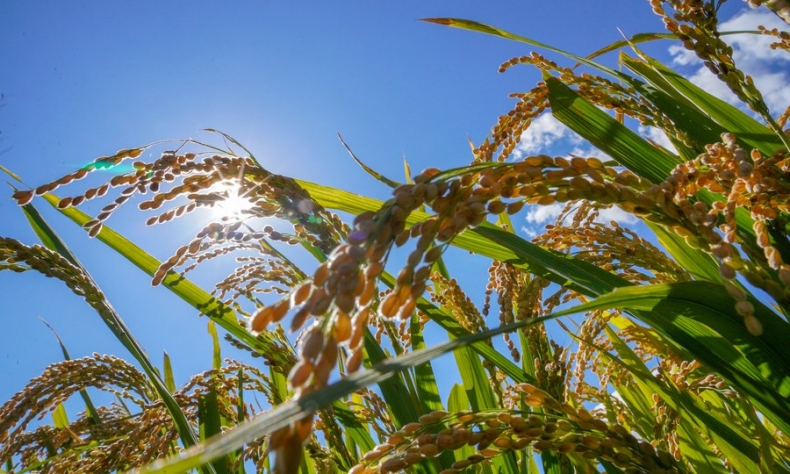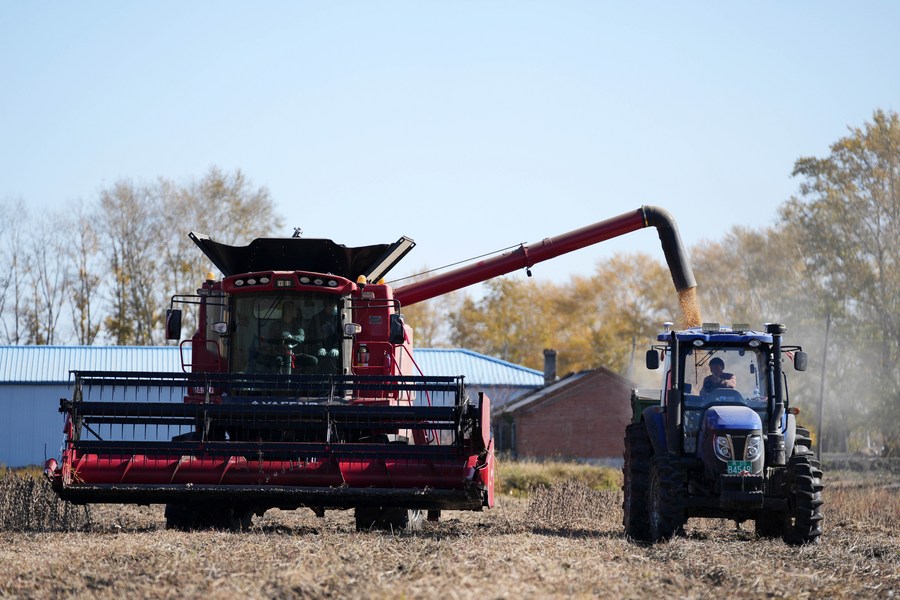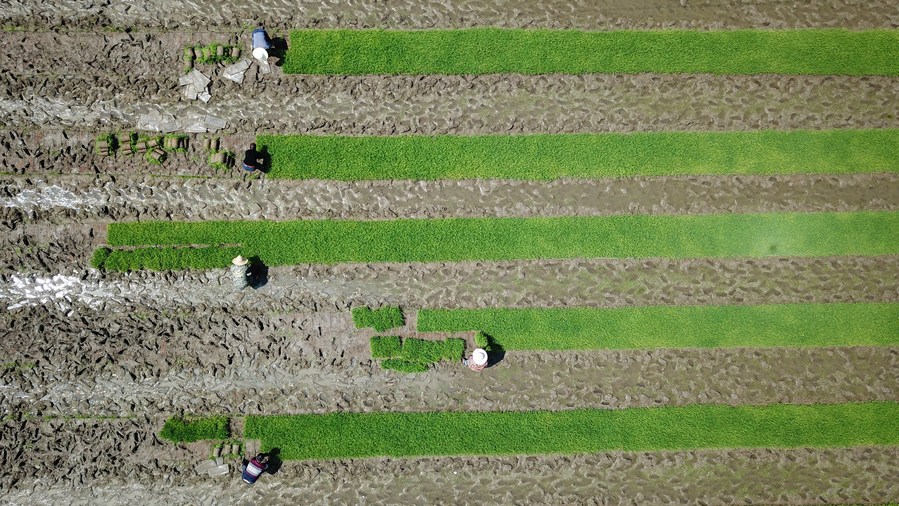Securing Sustenance

Through agricultural reforms, sustainable practices, market-oriented approaches and strategic initiatives, China has made great strides in ensuring stable and sufficient food supply for its people.
National food security is the backbone of any economy, and achieving food security is essential for the prosperity of a nation.
During my study in China at the Institute of South-South Cooperation and Development, Peking University, from September 2022 to July 2023, I learnt how China has managed to achieve food security despite its large population of around 1.4 billion and numerous other challenges by means of strategic planning, effective policy execution, technological advancement and global collaboration.
China faced extreme scarcity of food in the middle of the 20th century. After the catastrophic famine from 1959 to 1961, China set out on a course of agricultural modernisation to alleviate food shortages. The authorities introduced different measures and programmes with the goal of boosting agricultural output and effectiveness, which translated into improved food security.
China’s experience
As part of the reforms launched in 1978, the Chinese government introduced the Household Responsibility System in the countryside to raise agricultural output. The measure motivated farmers to assume control over their land and enjoy the rewards of their hard work. Under this system, collective farms were dismantled, and individual households were given responsibility for their own plots of land. This shift from collective farming to household-based agriculture led to increased productivity and efficiency in the agricultural sector which in turn enhanced food security.
China has also made significant investments in agricultural research and development, actively encouraging the adoption of modern farming methods and technologies, and set up multiple research establishments and universities across China dedicated to agricultural science and technology, such as Peking University. These institutions concentrate on the advancement of high-yielding crop varieties, enhancement of irrigation methods, improvement of pest management approaches, and encouragement of sustainable farming methods. Through such efforts, China has successfully devised novel technologies and methodologies that have considerably elevated agricultural output.

Improvement of rural infrastructure also played a vital role. Investments made in irrigation systems, transportation networks, storage facilities and rural electrification have facilitated efficient production, reduced post-harvest losses and improved market access for farmers. Another crucial factor contributing to China’s improved national food security is the modernisation of its agricultural infrastructure. The government has invested in reservoirs and water conservation projects to ensure efficient water usage in agriculture. Additionally, there has been a push for mechanisation of farming practices, including the use of machinery for planting, harvesting and processing crops.
I also found that China recognises the importance of sustainable agricultural practices to ensure long-term food security. The government has implemented policies to promote ecological conservation and reduction of chemical inputs in agriculture. The country has also rolled out measures to protect its natural resources, such as afforestation programmes, wetland conservation, and establishment of nature reserves. These policies aim to preserve biodiversity, maintain the ecosystem and mitigate the impact of climate change on agriculture.
To reduce reliance on chemical inputs, China has encouraged its farmers to adopt integrated farming and pest management. These methods promote soil health, reduce environmental pollution and improve the quality of agricultural products.
Agricultural subsidies and price support have also been introduced to raise food production. The Chinese government has introduced subsidies and price support measures to stabilize agricultural income and encourage farmers to increase production.
Another method used by China to improve its food security is reform and opening up. Market-oriented reforms have increased agricultural trade, both domestically and internationally. China is also participating in international trade to supplement domestic food production. By importing agricultural products from other countries, China has diversified its food supply and reduced its dependence on domestic production alone. The country also plays an active role in international organisations, such as the Food and Agriculture Organisation, working with other countries in research, technology transfer and capacity building.
Challenges ahead
However, despite the fact that China has reached significant milestones in improving its food security over the last decades, which have led to self-sufficiency in staple grains such as rice, wheat and corn, concerns remain with regard to food security in the country.
The first problem is a limited availability of arable land. The ongoing urbanisation and industrialisation may lead to appropriation of agricultural land for non-agricultural purposes. This may also put pressure on the remaining arable land to produce more food to meet growing demand.

Secondly, there is the issue of water scarcity. China is experiencing water shortages especially in the northern parts of the country. The country is home to about 18 percent of the world population; however, it has only 7 percent of the world’s fresh water resources. Moreover, speedy economic development has put immense pressure on water resources. This may lead to overuse of rivers, and cause depletion of water sources in the future. The country may need to intensify implementation of effective water management strategies.
Thirdly, climate change may also pose a serious threat to China’s future food security. Variations in rainfall, and increased frequency of extreme weather events like floods and droughts may in future affect productivity, which will then affect crop yields. China must take note of these and other related challenges going into the future.
Besides sufficient supply, the safety of food is also a concern in China. Since China produces food in large quantities at a time, ensuring the quality of food is not easy. Also, the heavy use of chemicals may in future have serious public health implications and therefore undermine efforts to improve food security.
As China experiences rapid urbanisation, there is a gap in terms of access to food between urban and rural areas. Solving this problem requires comprehensive policies that promote equitable distribution channels, support local food production, and improve rural infrastructure.
China’s achievements in food security reflect its commitment in addressing its historic challenges and implementing comprehensive policies. Through agricultural reforms, sustainable practices, market-oriented approaches and strategic initiatives, China has made great strides in ensuring stable and sufficient food supply for its people.
Though the country needs to solve numerous problems ranging from environmental pollution to unequal access to food, China’s experience still provides valuable lessons for other nations striving to achieve food security in the face of population growth and changing global dynamics.
The author is Principal Training Officer of Zimbabwe Public Service Commission.
 Facebook
Facebook
 Twitter
Twitter
 Linkedin
Linkedin
 Google +
Google +










